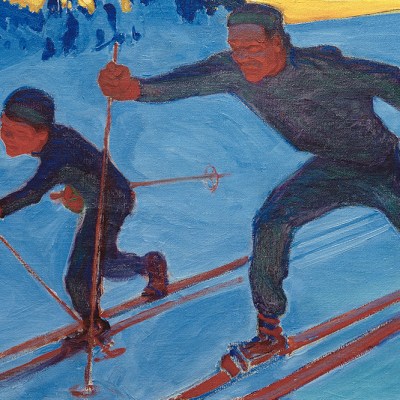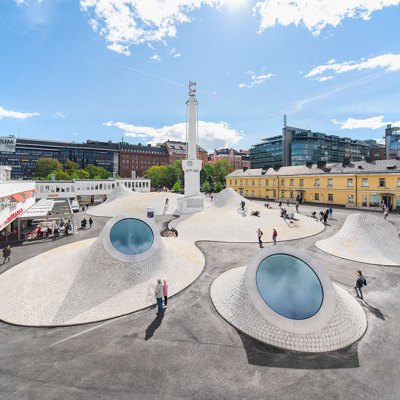The last time the Ateneum Art Museum rehung its collection was in 2016, which may not seem very long ago but as its current director Marja Sakari points out a lot has changed in the intervening seven years. ‘We’ve had Covid, the war in Ukraine, the #MeToo movement, Black Lives Matter,’ she says. ‘As curators and holders of these collections we have to do something with them, we can’t just leave them like they have been because we live in a totally different society.’ When I visit, in early April, Finland has officially joined NATO and the results of the parliamentary elections have just been announced, including the defeat of the prime minister Sanna Marina and the Social Democrat party, and more alarmingly, the rise of far-right parties. Neither could have been predicted when the museum closed for essential renovations in April 2022, but it feels like a pertinent time to open an exhibition that aims to capture the imaginations and concerns of contemporary audiences.
The imposing, Neo-Renaissance building that houses the Ateneum is both a landmark in Helsinki and a national treasure. Its facade, stretching across one side of the busy railway square, bears relief portraits of artists such as Rubens, Rembrandt and Michelangelo while large windows make the interior spaces refreshingly bright and airy. Designed by the Finnish architect Theodor Höijer in 1887, the building initially housed the collections and drawing school of the Finnish Art Society and the applied arts school of the Finnish Society of Crafts and Design – both accepted women and men as students from the outset. During this period, Aune Lindström was hired as one of the museum’s curators, a bronze bust of whom by the Finnish sculptor Elias Ilkka is currently on display. ‘It was pretty progressive for the time,’ says Sakari, ‘although, interestingly, Aune didn’t actually acquire many artworks by women for the collection.’ That happened later, and over several decades. In 2019, the museum launched a major research project into 19th-century women artists mainly from the Nordic countries. In 1991, the Ateneum re-established itself solely as a museum and today forms part of the Finnish National Gallery, together with the Museum of Contemporary Art Kiasma and the Sinebrychoff Art Museum, which hold more than 30,000 artworks between them dating from the 18th century to today.
Self-portrait with Black Background (1915), Helene Schjerfbeck. Herman and Elisabeth Hallonblad collection. Photo: Finnish National Gallery/Hannu Aaltonen
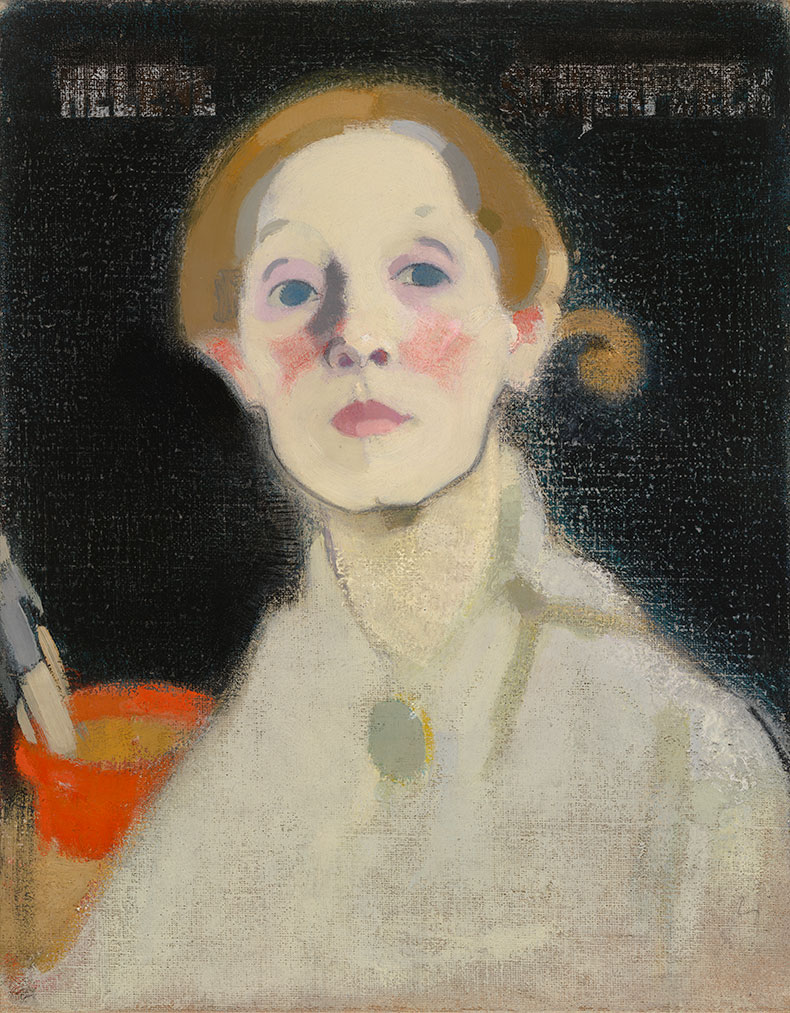
One of four thematic sections in the new ‘Question of Time’ exhibition looks at how collectors and patrons helped to build the collection. One of the museum’s most important patrons was Doctor Herman Frithiof Antell (1847–93), who lived for most of his life in Paris and bequeathed his entire estate and art collection to the Finnish state, including works by Finnish artists who lived in the French capital as well as by Parisian artists such as Rodin. He is depicted here looking pensive in a portrait by Akseli Gallen-Kallela alongside the strikingly explicit painting Démasquée (1888) which was commissioned by the doctor, who had a certain penchant for erotica. Surprisingly, however, there is very little about the museum’s own educational – and experimental – history: what was made or discovered within its walls. While it’s true that the art schools now have homes elsewhere in the city and presumably hold their own records, it feels like an oversight not to interweave some of these narratives, especially in a section that is titled ‘Art and Power.’ As it stands, this part of the show feels slightly out of touch with the stated aim of the rehang, even if there are some gems to be found including Helen Schjerfbeck’s haunting Self-portrait with Black Background (1915), the first painting by a woman artist to be commissioned by the Finnish Art Society.
View from Haminalahti (1853), Ferdinand von Wright. Photo: Finnish National Gallery/Hannu Pakarinen

The ‘Images of a People’ section takes a more considered approach. Here, the curator, Timo Huusko, has attempted to examine the role of art in creating, reaffirming and, even, limiting Finnish national identity. There are, as to be expected, some rather splendid landscape paintings of sweeping views over the country’s many lakes and dense forests, such as Anton Lindforss’s sun-drenched Summer Landscape from Liinakhamari (1934). View from Haminalahti (1853) by Ferdinand von Wright, donated to the Finnish Art Society in 1854, was considered by the society’s secretary Zachris Topelius, who belonged to the nationalist Fennoman movement in the period when Finland was part of the Russian empire, to be the very embodiment of Finnish national identity in its idealised vision of unspoilt nature moodily lit by the setting sun. But there is also a wall dedicated to the artists and communities that didn’t quite fit into this version of Finnishness, such as the Roma and Sami people. A defiant-looking self-portrait by the author and artist Tove Jansson is also included here. Jansson was part of what was by 1942, when the picture was painted, a Swedish-speaking minority; she also had relationships with women at a time when this was not just socially unacceptable but a crime. In the next gallery, portraits of high society are juxtaposed with those of the lower classes as well as scenes depicting the brutality of the Finnish Civil War following its declaration of independence from Russia in 1917. The most striking pairing is that of Helene Schjerfbeck’s Toipilas (The Convalescent) (1888) and Akseli Gallen-Kallela’s Eksynyt (Lost) (1886) which offer very different depictions of a childhood in Finland; Schjerfbeck’s shows a child seated in a cushioned wicker chair playing with a plucked branch while Gallen-Kallela’s subject, barefoot with her shirt fallen off one shoulder, is slumped angrily against a tree.
Self Portrait (1942), Tove Jansson. Photo: Finnish National Gallery/Yehia Eweis
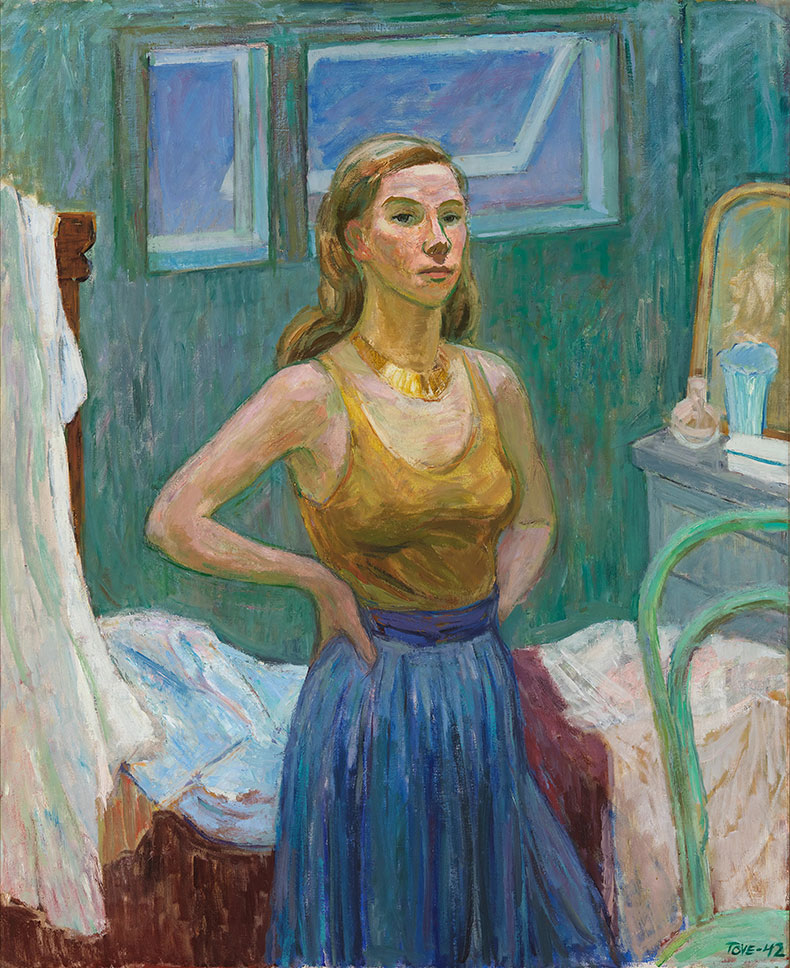
One of the main reasons for the closure of the museum was to improve the ventilation system to accommodate the increased number of visitors as well the building’s energy efficiency, but subtle alterations have also been made to open up new routes through the building. While in the past most visitors entered to immediately ascend the vast stone staircase to the main gallery, the expanded back entrance now provides access to a light-filled glass atrium (once an open courtyard) that serves as an inviting meeting place with chairs and plants dotted around as well as the museum’s shop. From here, visitors can choose to head upstairs or they can begin on the ground floor in the ‘Art and Power’ section. ‘We were thinking how can this be a collection for everybody and for all,’ Sakari says, but it also helps to create a sense of flow between the different themes. It makes sense, for example, to move from ‘Images of a People’ into ‘The Age of Nature’, the section that occupies the main gallery, rather than arriving there straight off the bat, not least because this is perhaps the most experimental display, featuring several contemporary works. Giving Birth and Dying Still (2016) by Toni R. Toivonen bears the gruesome imprint of the remains of a mother cow and her calf that were placed on a plate of brass and left to decay on the metal. Hanging on the back wall, it forms a powerful and eerie centrepiece among more romantic depictions of agricultural life including a portrait of a fluffy pig, a now extinct species, surrounded by magpies by Ferdinand von Wright.
Pigs and Magpies (1875) Ferdinand von Wright. Photo: Finnish National Gallery/Hannu Aaltonen

The final section, ‘The Many Faces of Modernity’, looks at the Winter War of 1939–40 and the transition of Finland from an agricultural country into a largely industrial one. Among the most striking works here are Elga Sesemann’s anxious, impasto Street (1945) and Yngve Bäck’s melancholic Melody of War (1944). Rendered in cool tones of purple and blue with a monstrous figure playing a cello at the centre, the latter seems to bear a slight cubist leaning, a movement which otherwise isn’t represented. As Huusko explains, Finnish art critics didn’t look favourably on cubism and very few works of this kind found their way into the collection. Meanwhile, a wall of portraits by various artists of largely blonde-haired children reading books or playing jump rope on a lawn enclosed by trees reveal how the ideas of Finnishness that were shaped by 19th-century painters continued to linger into the 20th century as well as, perhaps, a nostalgia for childhood at a time of upheaval.
Street (1945), Elga Sesemann. Photo: Finnish National Gallery/Jenni Nurminen
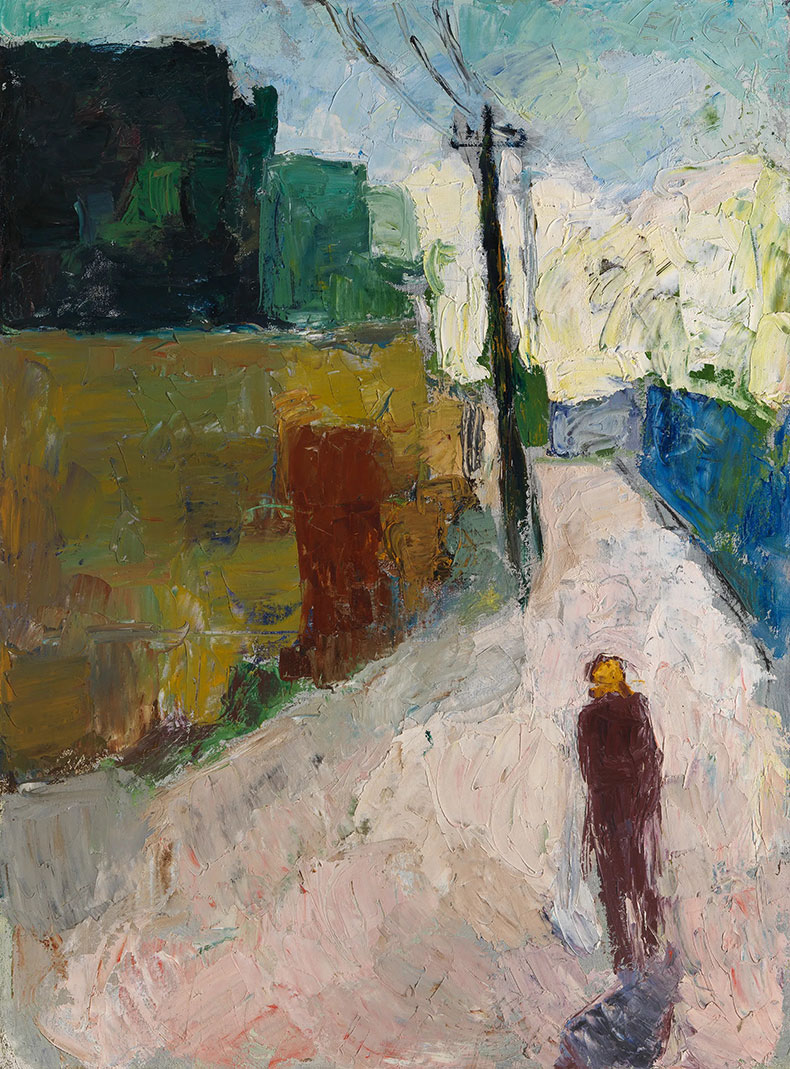
Overall, the rehang is ambitious and far-reaching, providing a valuable insight into how Finnish culture has evolved. As for whether it succeeds in capturing the present moment (surely an impossible task), remains to be seen.
The Ateneum Art Museum in Helsinki is now open.
